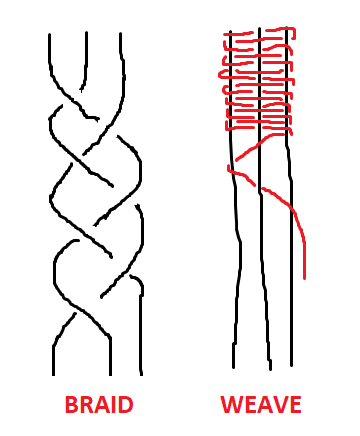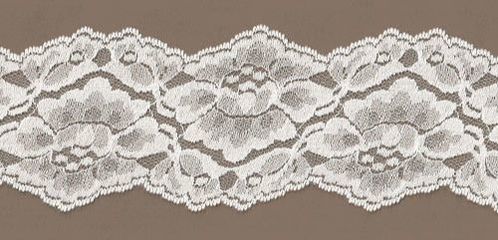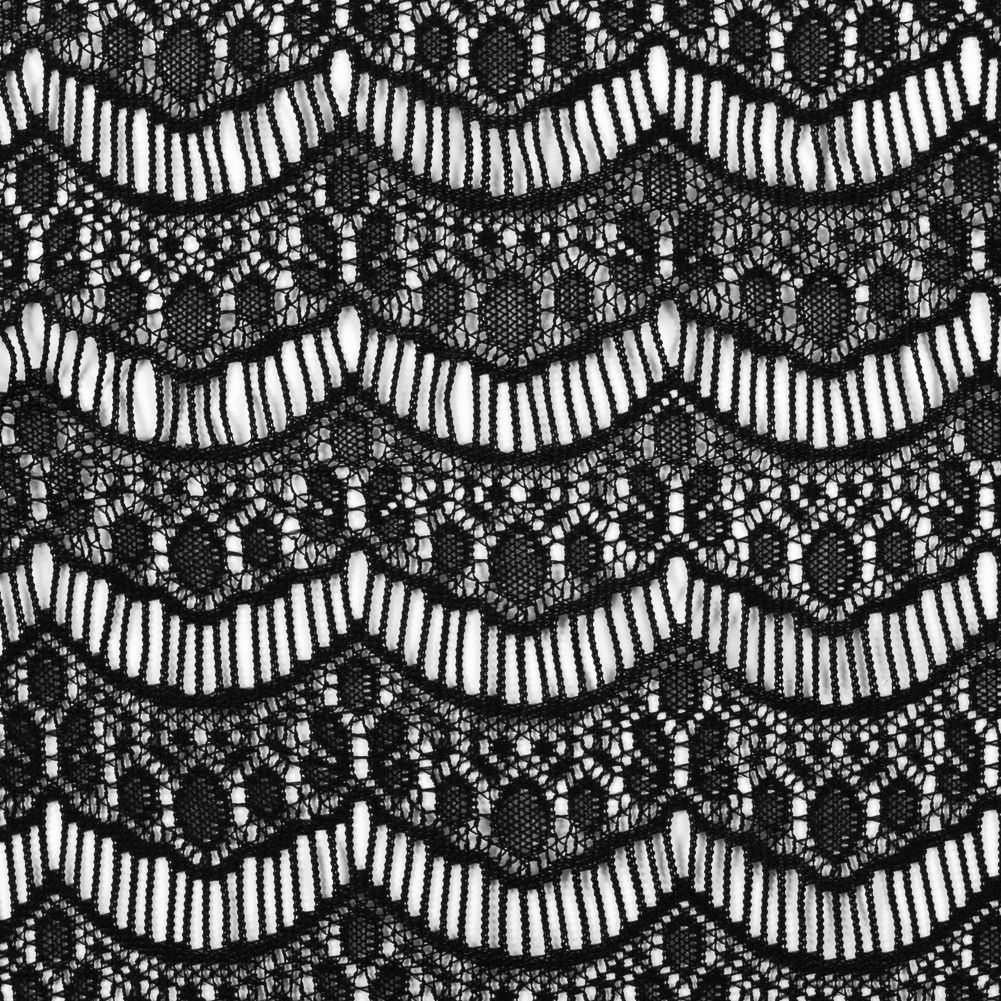|
The first time I heard "galloon" I though it was a pirate thing... it sounds like doubloon or galleon or maroon! Arr, matey! But actually, galloon is a textile term. Wikipedia's stub of an article about it simply says it's a woven or braided trim, and gives as an example the gold trim sewn all over 1700's style liveries. Merriam Webster gets closer to the word as I've heard it used, specifying that the narrow trim has both edges scalloped. Do an image search to see the different shades of meaning: "galloon trim" yields a mix of narrow metallic trims and lace trims, while "galloon lace" yields lace trims with scalloped edges. Today, I'll try to delineate these different uses and meanings of galloon. Regarding copyright: The pictures illustrating this post come from various sources... Wikimedia Commons, my own work, and lace/fabric retailers. I have included usage rights and copyright information under each picture, as well as off-site links for pictures which are not mine to claim. This post is educational and not for profit. GALLOON - AN UMBRELLA TERM
GALLOON LACE My interest is more specifically in galloon laces. These are sometimes true galloons (i.e. made by braiding). Bobbin lace is, after all, a very elaborate braid! But the history of lacemaking is filled with bobbin-laces imitating needlelaces and vice versa, then knit or crochet laces imitating the other two. Likewise, machine-made laces imitate handmade styles. So it is that a modern Alençon lace, which is made on Leavers looms and then heavily embroidered with gimp, can be called a galloon lace if it imitates true braided galloon laces. Because of this, at least as far as lace terminology goes, people have lost the association of galloon with braids, and now use the word to refer to the lace's scalloped edges! A lace trim with scallops on both sides is sometimes called "double galloon". When the word is used thus, it becomes a countable noun... and people might ask for a lace with "galloons". This image shows the main benefit of galloon lace: the scallops and flowers on each side are usually offset so that you could draw a sine-wave down the center. This means that you can cut a "double galloon" lace down the middle (carefully cutting around the motifs) and get double the length of "single galloon", which you can use as an edging. From the manufacturer's perspective, the tension of the flowers is easier to maintain if they're pulling against each other. From the user's perspective, it's more versatile: you can use it as-is, or you can cut it to get twice the length of single galloon trim. This particular galloon lace is only $1.74 a yard, so it's not a big deal, but if you're looking at $70/yard Alençon galloon and you need to hem a wedding dress, it's nice to be able to buy half the hem circumference instead of having to buy it all! MORE IMITATION A lace trim is a narrow width, as opposed to an "allover" lace, which is lace fabric. But sometimes, manufacturers use the technology for making allover laces to imitate galloon laces. A good example is faux crochet allover lace with "eyelashes". Here's a picture from Mood Fabrics: This is an allover lace, so you could cut a pattern and make a shirt or dress with it. But if you wanted to use it as trim, you'd cut it in between the scallops, right in the middle of those "train tracks". It's 58" wide from selvedge to selvedge, so you'd get 58" of scalloped trim before having to join another piece. The vertical lines in the picture that I just called train tracks are the "eyelashes"... if you cut them down the middle, you get fringed edges on both sides of your lace trim. (Some people dislike the eyelashes, thinking they look messy, but other people love their delicate look.) This lovely fabric is really a case of imitation on top of imitation! It imitates crochet lace, even though it's not made with interlocked loops like crochet. Crochet lace was invented to imitate more expensive bobbin laces. The eyelash edges, so desirable in lace, are called picots (say "PEE-kohz") in bobbin lace and needlelace, and are super time-consuming to make. Making them in crochet is much faster. So this lace is a machine-made imitation of a crochet lace, which was a crochet imitation of bobbin lace. The "eyelashes" are imitations of picots. The scallops, if cut into a trim, are imitations of galloon lace. BEADING LACE What if you see the scallops turned inward and the center area composed of evenly spaced holes? You probably have a beading lace! Beading laces are common in lingerie and are designed for weaving ribbon in and out of the holes. LacePlace has a whole page devoted to them. Beading laces can be galloon trims if they're made by braiding (so many trims under that umbrella!), but they're not usually called such, because their salient attribute is their holes, not their method of manufacture or their edges.
2 Comments
The Sister
8/27/2018 03:46:26 pm
The galloon lace was very pretty! I like how the design is on both edges; it seems more delicate to me.
Reply
Leave a Reply. |
Karen Roy
Quilting, dressmaking, and history plied with the needle... Sites I EnjoyThe Quilt Index Categories
All
Archives
March 2024
|




 RSS Feed
RSS Feed